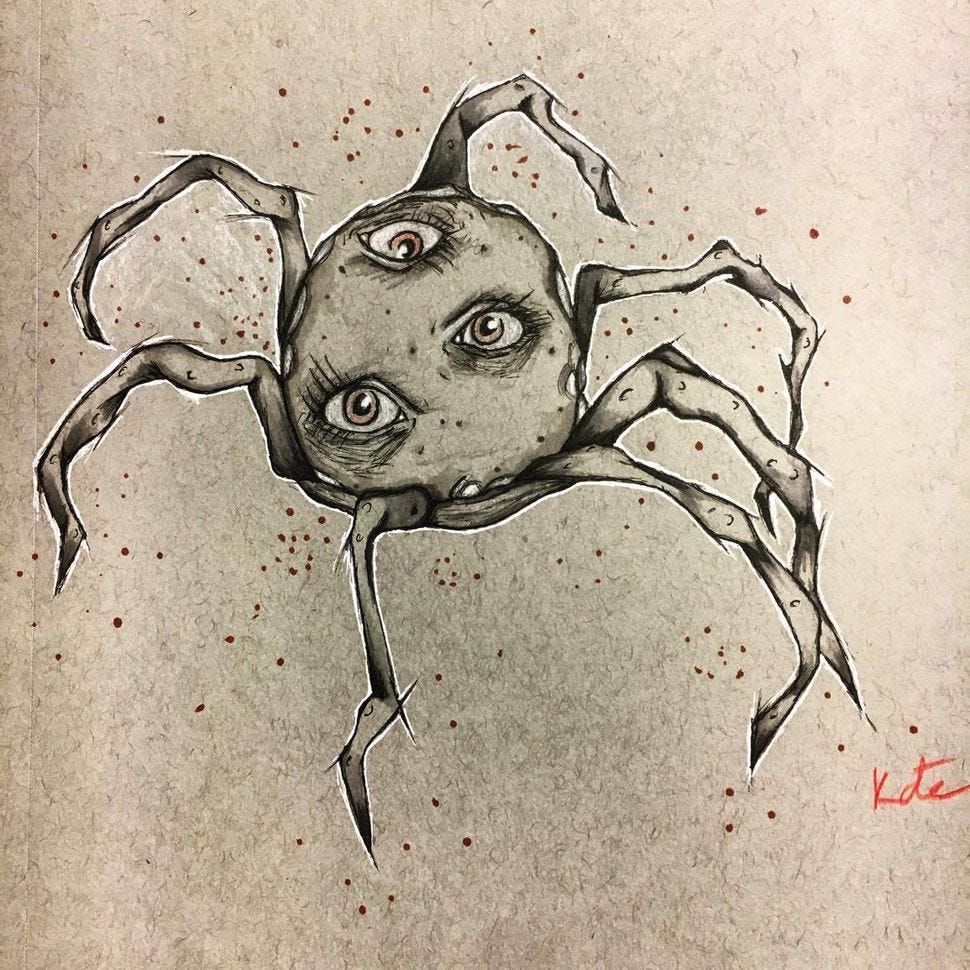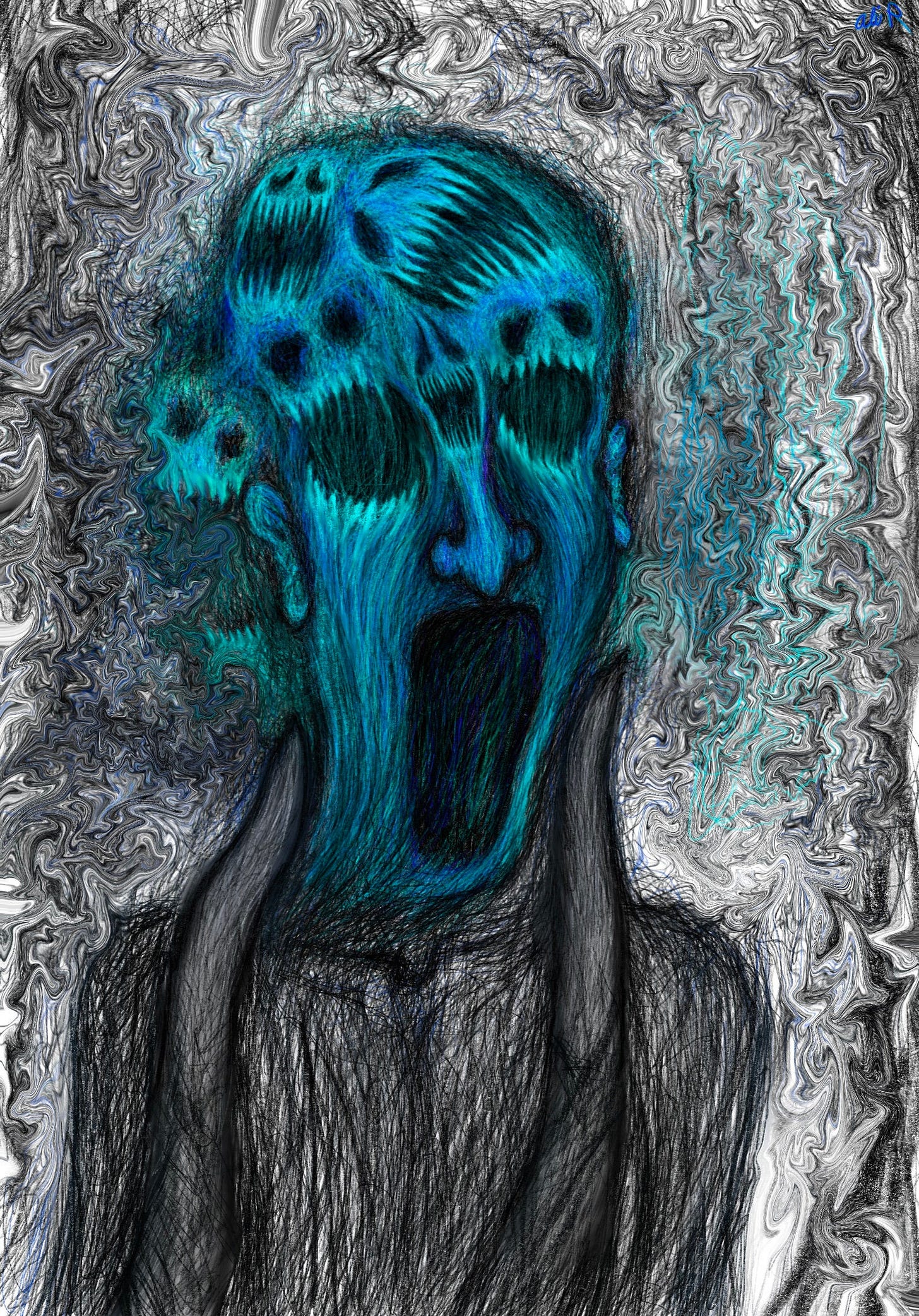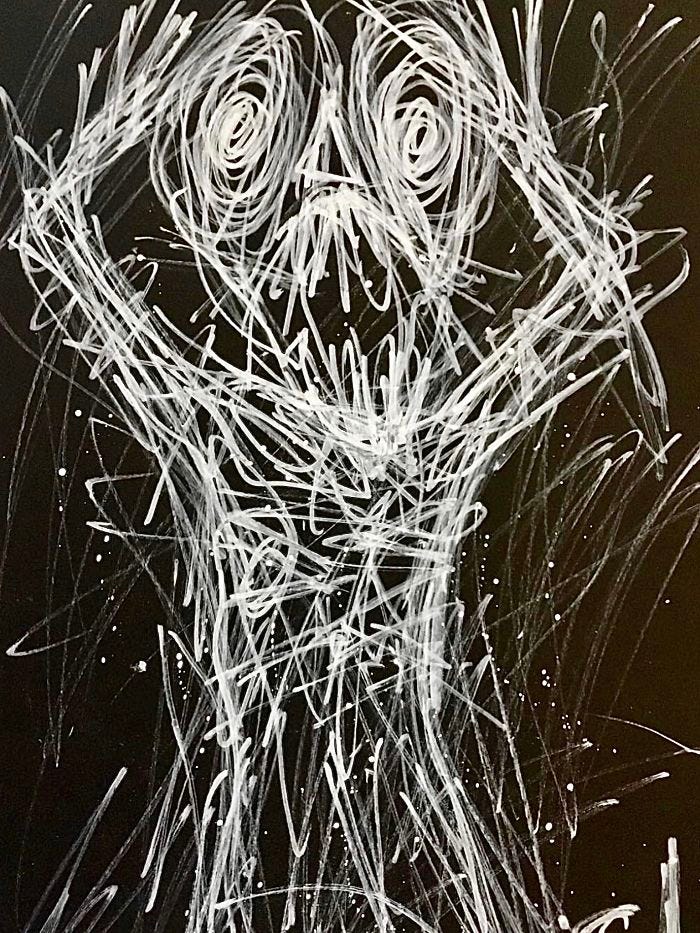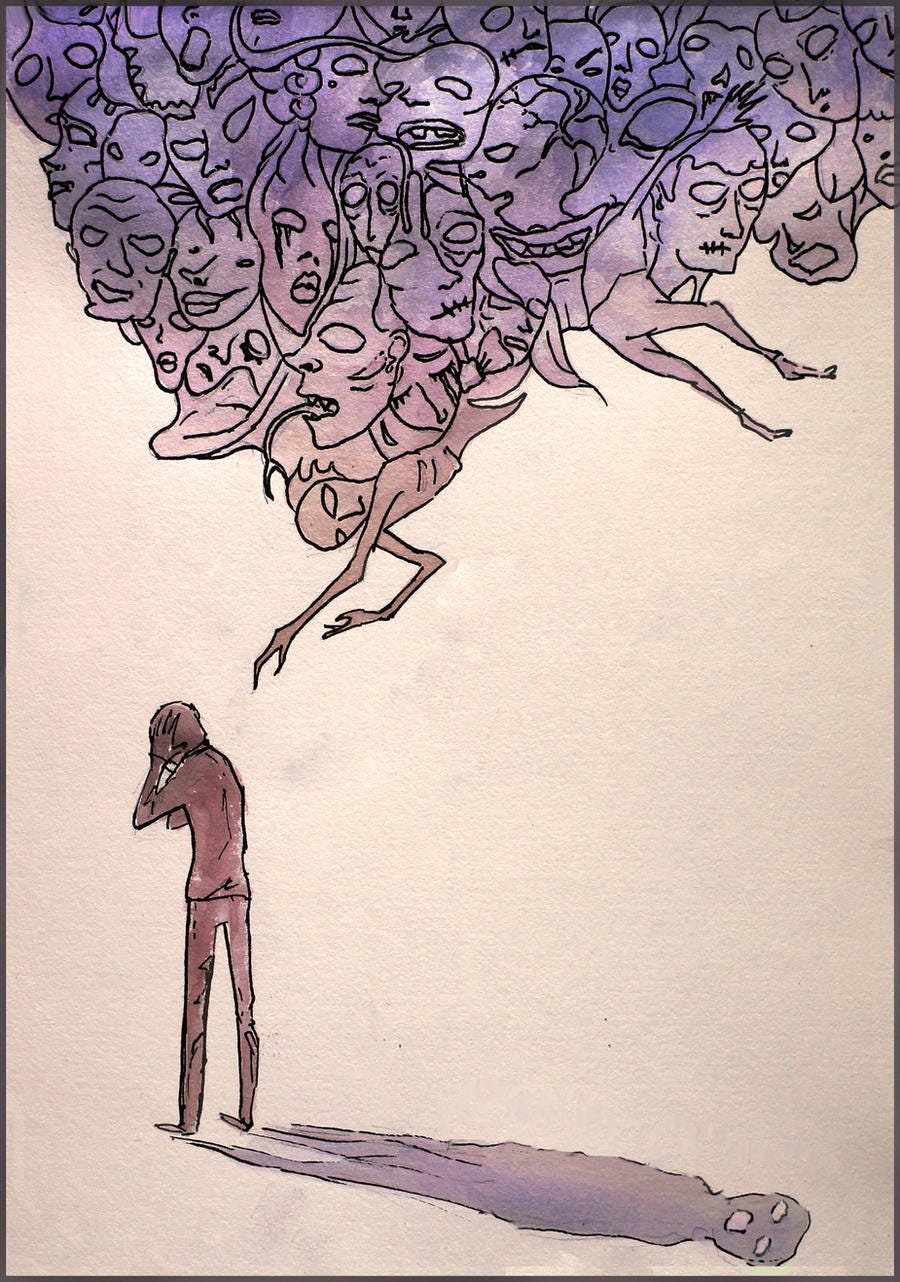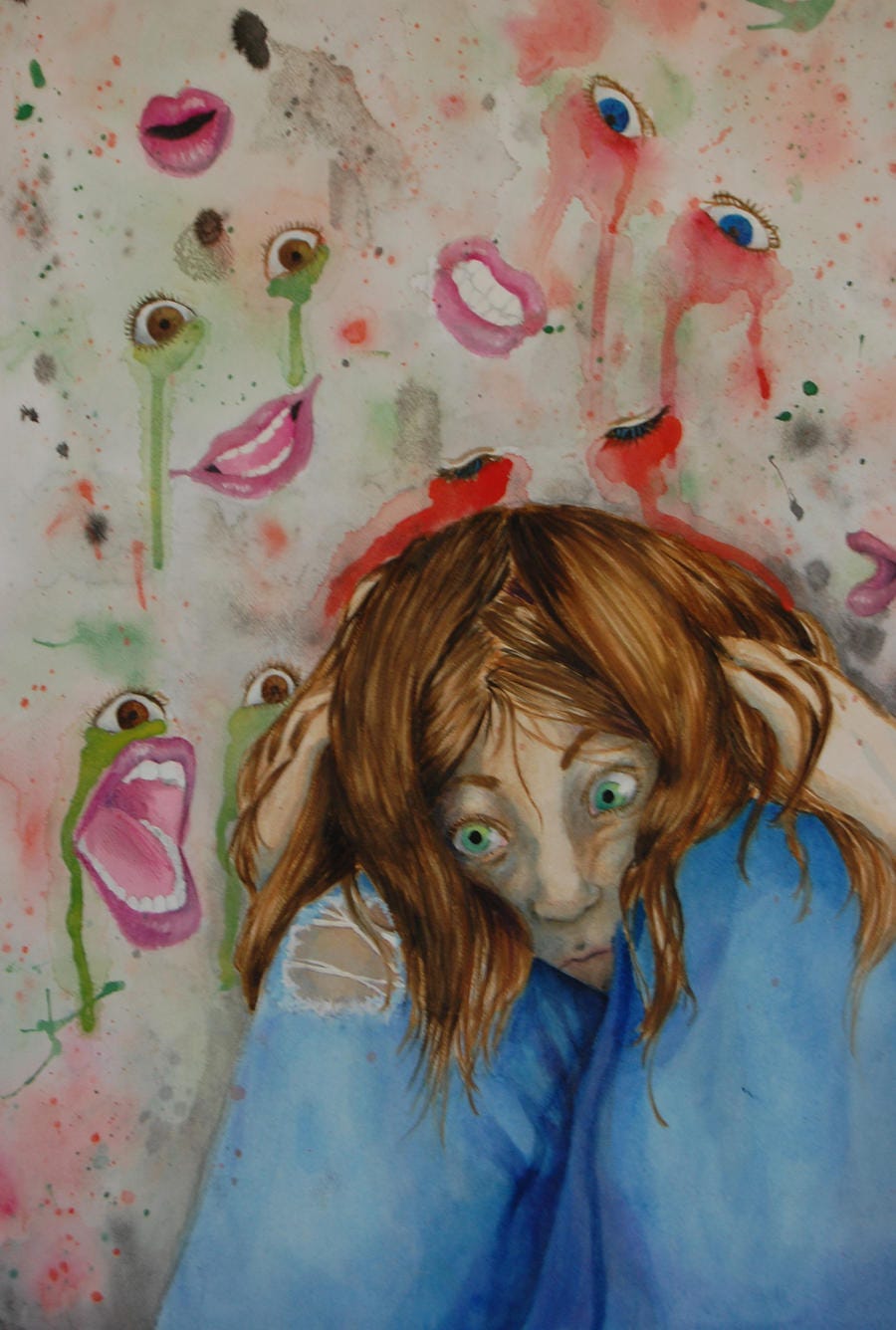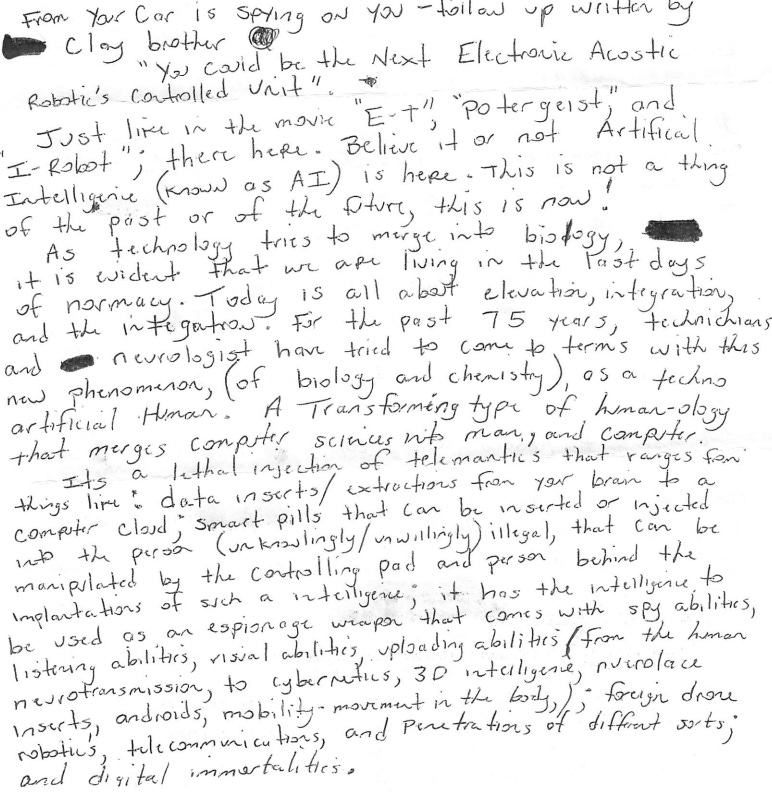Schizophrenia is an organic brain disorder “characterized by a range of symptoms such as delusions, hallucinations, disorganized speech and behavior, and diminished emotional expression.” There is a strong (~50%) genetic component to the illness and it is thought that it might involve neural ‘pruning’. The so-called synaptic hypothesis states that schizophrenia’s dysfunctions might lie in the synaptic connections of the brain’s neurons, generation missed signals and confusion on a global scale and generating sensory distortions and pervasive feelings of panic and threat.
While the causes and etiology of schizophrenia remain unclear the disorder is known to be a terrible burden, and its victims are a visible and haunting reminder of the fragile and cherished nature of identity and subjective experience for each individual person.
The ‘positive’ features of schizophrenia (visual and auditory hallucinations, persecutory delusions, etc.) get a lot of coverage but the ‘negative’ aspects are just as bad: diminished affect, difficult concentrating or thinking, poor hygiene, anhedonia, catatonic stupor.
Long ago I became entranced by collections of ‘schizophrenic art’. There’s something horrifyingly sincere about these pieces, as if each painting or drawing is a cry for help from a distant world of suffering.
The themes are clear and persistent (confusion, suffering, darkness) and the visual language is fairly consistent (shadows, eyes, screaming, gestures of torment). I find it compelling… but difficult to view. When your own mind is your gravest enemy what aid or comfort can others give you?
As part of my job I read a lot of letters from clearly schizophrenic inmates. I will dive deeper into their thoughts and experiences as time goes on. This post will function as an introduction to that undertaking.




